Toyota Proace Max Electric van review (2024)
There's lots that is familiar about the Toyota Proace Max, but arguably its biggest selling point is its 10-year warranty
PROS
- Tried and tested large van
- Big payload and lots of space
- Simple approach to specification
- 10-year manufacturer warranty
- Factory-made conversions available
CONS
- Only the one trim
- Just one power and motor option
- Underlying van is showing its age
- Cabin ergonomics could be better
- Limited number of shapes and sizes
Summary
The Toyota Proace Max is a brand-new van. Sort of… It’s certainly the first large van that has come out wearing a Toyota badge, and it takes the brand into previously uncharted territory as one of the few companies to offer a vehicle in all of the major categories. In fact, with the Corolla Commercial it now covers more than most.
The Toyota Proace Max might well be the final piece of the jigsaw, but it is far from a new model. Like the rest of the brand’s panel van range, the base vehicle is a Stellantis vehicle, rebranded and given a Toyota twist. This only extends so far, though, as the basic shape, construction, size, payload and motor etc are all unchanged.
The differences are small and detailed, and not all are physical. Arguably the most important is the one on paper – the 10-year warranty that is offered across all of Toyota’s vehicles.
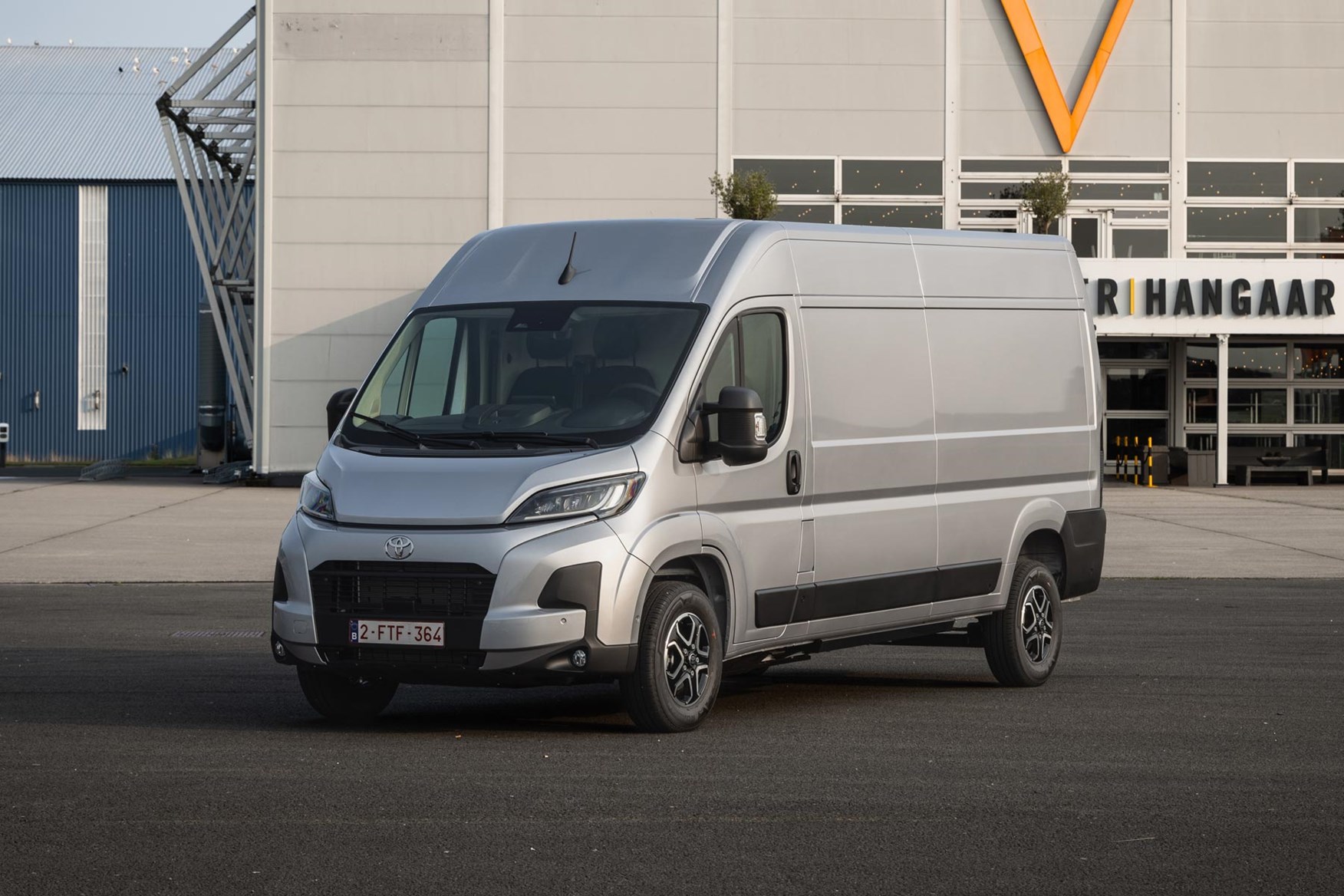
We’re looking at the battery-powered version here, the Toyota Proace Max Electric. There is a diesel version, too, though.
What versions of the Toyota Proace Max can you buy?
Toyota has kept things gratifyingly simple with the variations of Proace Max on offer. There is just the one trim – the Icon. This is because Toyota decided to concentrate on what it sees as the biggest seller, rather than having a wider range with those on the fringes accounting for only a few sales between them.
The Icon trim will be slightly better equipped than the equivalent Stellantis large vans, which would account for any marginal discrepancy in price. Toyota has said that it is not wedded to a single trim in the future if demand is there for something different – it has brought in an even higher level Sport trim on its smaller panel vans for example, while there is also an entry-level Active on both Proace City and Proace.
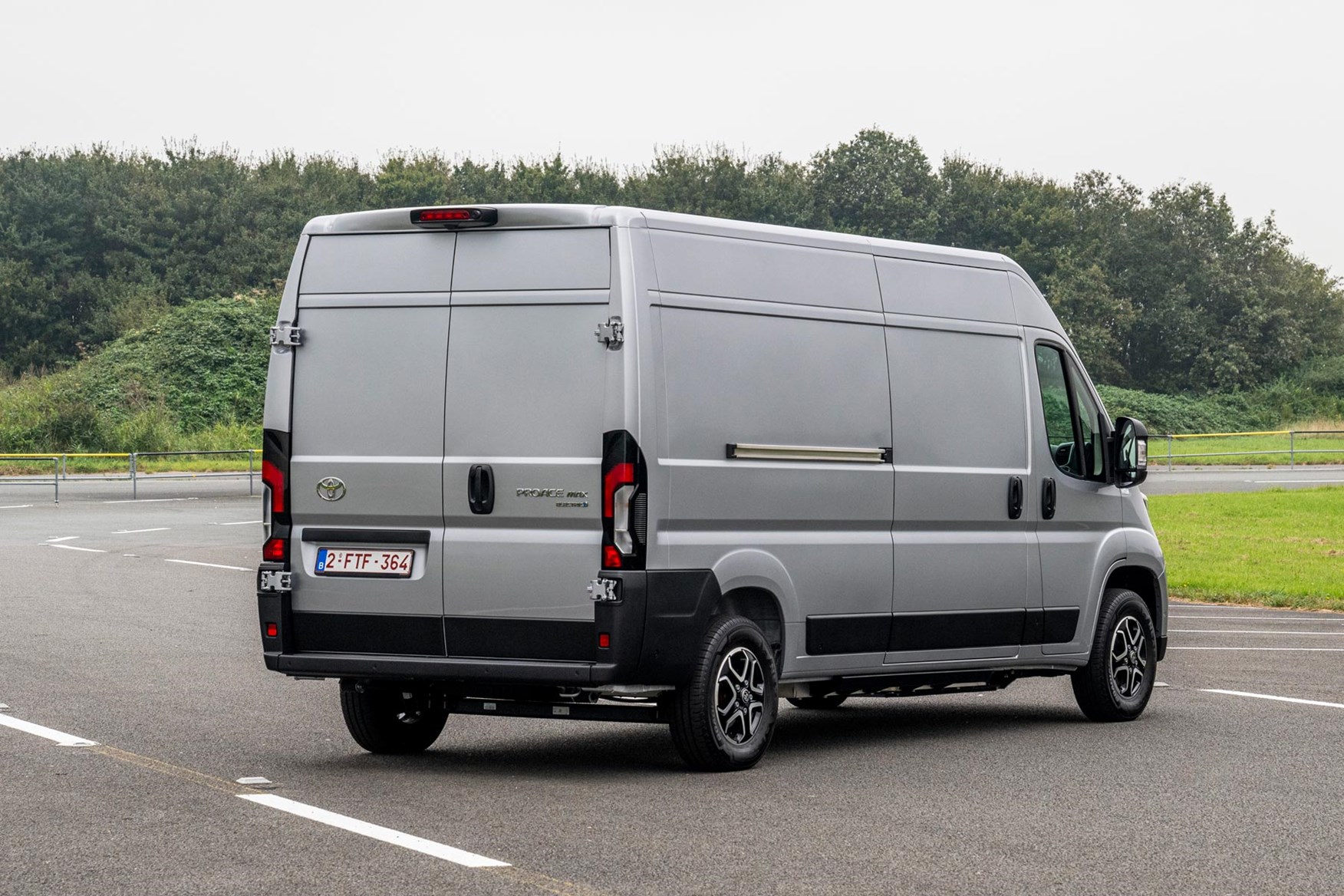
The shapes of the panel van are comparatively few in number, too, with only three options for the Electric. There is an L3H2 and an L3H3 - two heights of the long model – and an extra long and tall L4H3 version. This is different to the diesel, which doesn’t offer the longest model but has a shorter L2H2 instead.
What are the Toyota Proace Max’s rivals?
So many of the Toyota Proace Max’s rivals are its closest relatives. The other Stellantis large vans are the Citroen Relay, Fiat Ducato, Peugeot Boxer and the Vauxhall Movano. However, these all match each other in many ways – trim, warranty, dealerships, pricing etc – so the Toyota stands apart in some senses at least.

Elsewhere, the large van segment has some fantastic alternatives. The Ford Transit is the undisputed king of the bestsellers chart in the UK, but there is strong competition from the new Renault Master.
The revised Mercedes-Benz eSprinter has the biggest battery in the class, but is large with it. The Volkswagen Crafter is a great van but isn’t going to be offering an electric version until 2027 at the earliest so isn’t a like-for-like rival.
Verdict: is the Toyota Proace Max any good?
The Toyota Proace Max will do a perfectly solid job – the base vehicle is a long-standing one that has been serving a wide variety of needs for many years now. However, that is also its shortcoming – it offers nothing particularly new for the class.
There are many others that are basically the same van, and the competition does a better job in several key areas. The Renault Master E-Tech and Ford E-Transit are both better to drive and have more going for them in the cabin.
What no other large van offers, though, is the peace of mind that comes with a Toyota. The mechanicals might not be Toyota’s, but that warranty is second to none and will provide you with more reassurance than many others can offer.
Skip to our full verdict on...
- One simple power output
- Decent turning circle
- Good ride and urban manoeuvrability
A new face and a Toyota badge doesn’t hide the fact that the Proace Max is getting on a bit, and this is most apparent from how it drives. The steering is a little light and vague, the ride a bit bouncy at times and the cabin is a little less insulated from outside noise than some of its more modern contemporaries.
However, these are not really reasons on their own to avoid the Proace Max – there is a reason that the various Stellantis vans have kept churning out versions of this van. It’s perfectly fine, it just doesn’t feel as sophisticated as many of its rivals.
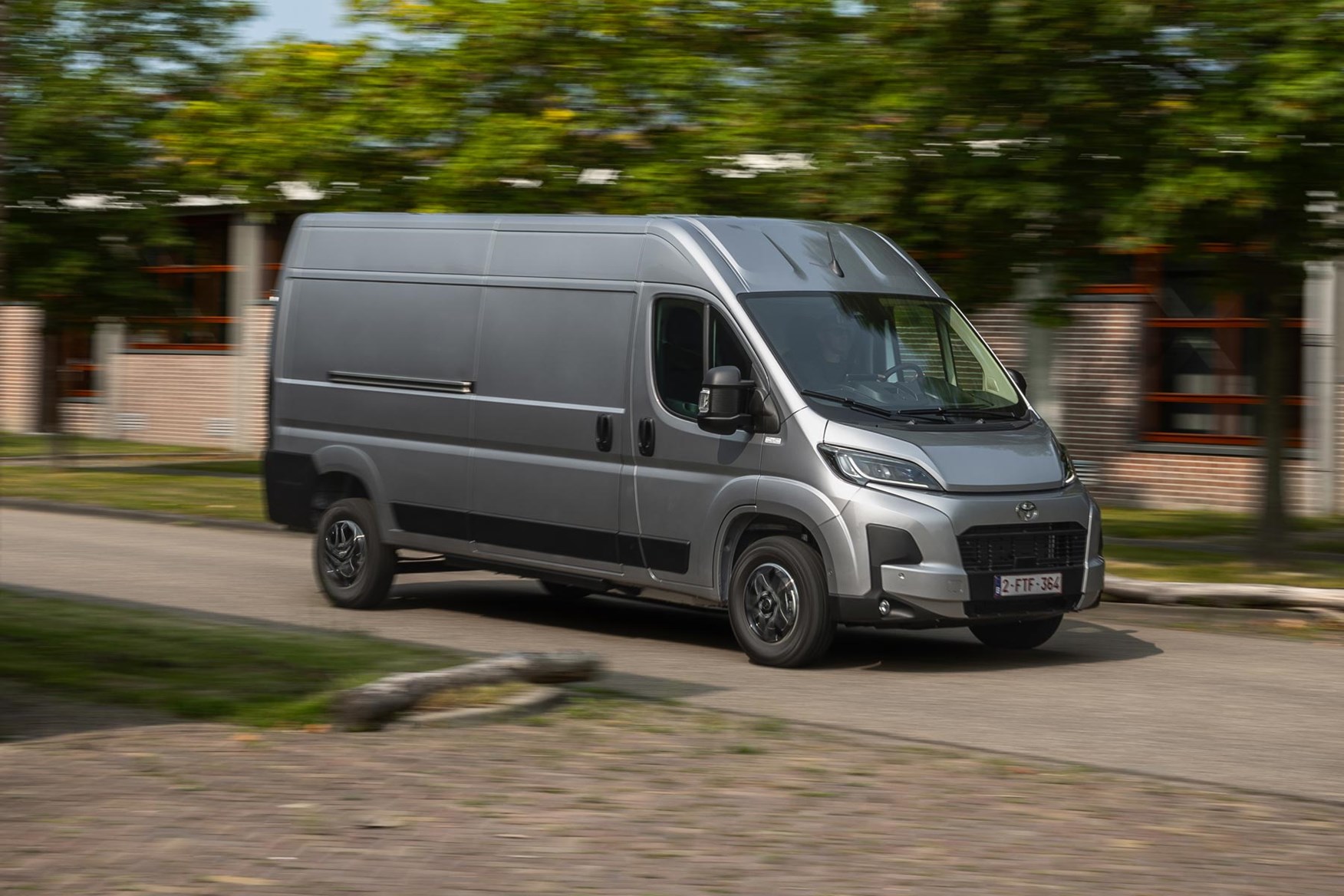
There is just the one battery and motor combination in the Proace Max, and it suits it well. The battery is a 110kWh unit, which is only bettered by the one in the Mercedes eSprinter. This is linked to a 272hp motor that gives 410Nm of torque.
This means that there is a good amount of responsiveness at lower speeds and for nipping past slower traffic. To aid this, there are three driving modes – Eco, Normal and Power. The former dials back the amount of power you can make use of to 163hp, as well as reducing the performance of the climate systems.
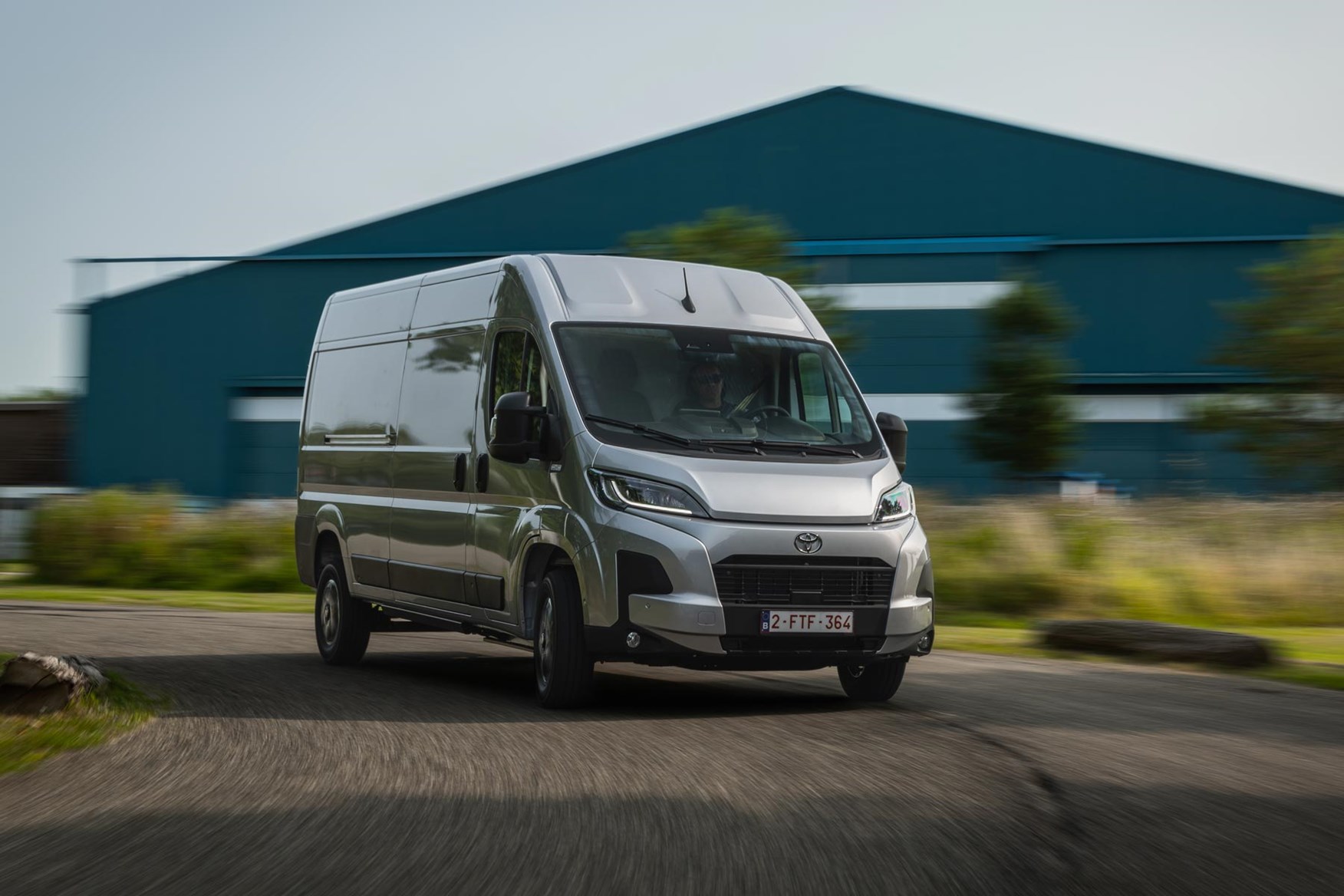
Normal gives you 218hp while Power lets you have the full 272hp. You can also play around with the levels of regenerative braking by using the paddles behind the steering wheel, with four levels to choose from. I suspect that only the most dedicated of drivers will apply themselves and tweak the settings on a regular basis, particularly given the 261-mile electric range that means most journeys will be done with plenty of juice still in the battery.
- Basic design
- Good space
- Standard-fit screen
The Toyota Proace Max’s cabin is, as the rest of the Stellantis large vans are, functional and basic first and foremost. There aren’t many clever tricks, but you do get the 10-inch touchscreen as standard, whereas you don’t on the more basic versions of the other brand’s large vans.
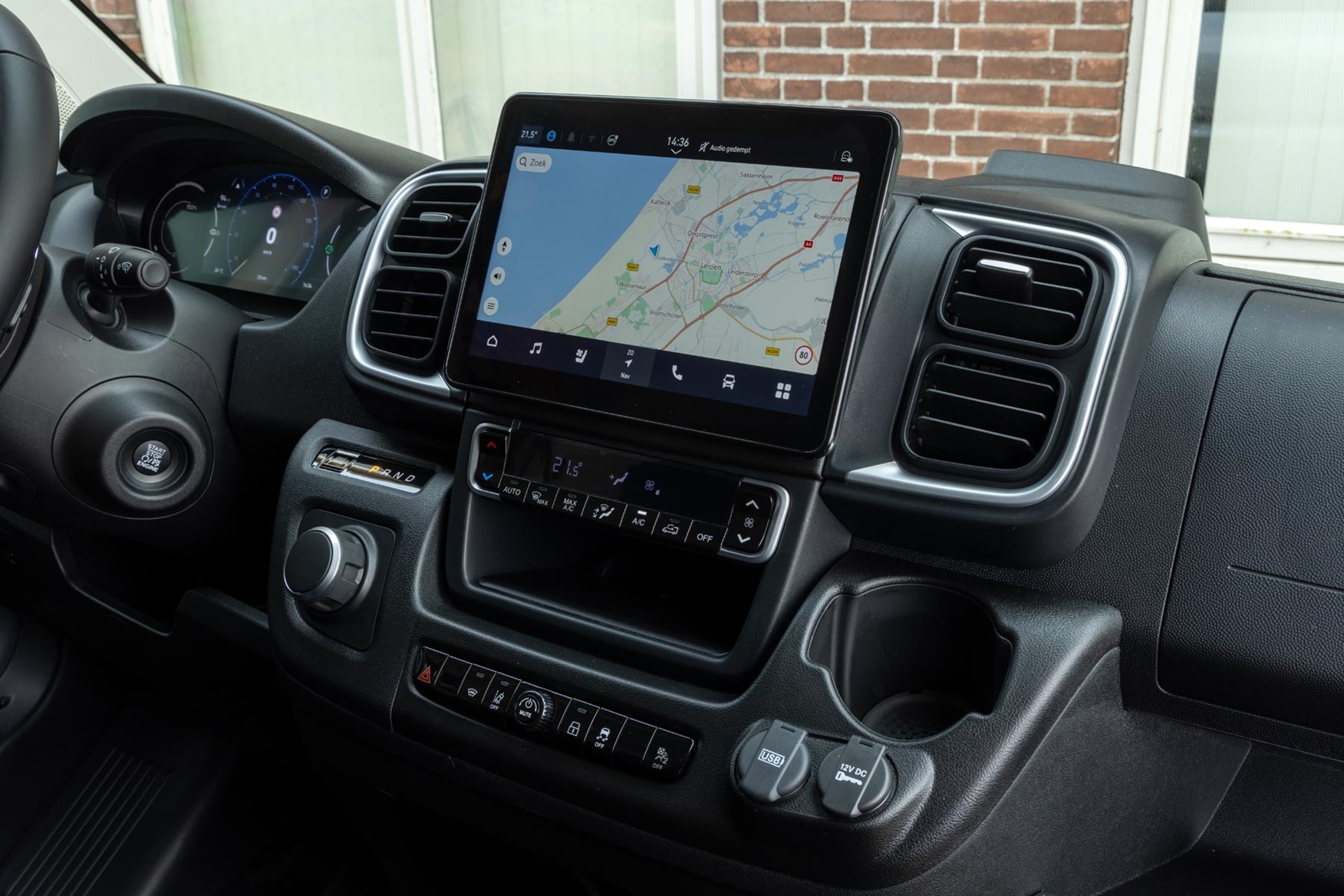
This lends the cabin a slightly more sophisticated and high-tech look, as several of the controls are tucked away in the screen – the heated seat controls are accessed through the screen rather than via a physical button for example. There are still some buttons and dials, though, with the fundamentals of the climate control and the volume all adjusted manually rather than through the infotainment, which is a bonus for those who want to tweak either on the move or with gloves on.
Keyless start stop is also a feature, which is standard practice in an electric van. Something that isn’t always offered, though, is the dial for selecting Park, Reverse or Drive or the automatic parking brake. The existence of both frees up more room on the dash and in the space where a middle-seat passenger’s knees go, which is a bonus.
Basic seating position
The driving position is serviceable but not excellent. You should be able to find a decent position as the steering wheel goes in and out and up and down and you can move the seat around in various directions, but there are some excellent seating setups in some of the large vans, with the likes of the VW Crafter offering sprung seats and wide range of adjustment that the Proace Max can’t match.

The middle seat also offers some simple practicality, flipping down to give a flat surface that is handy but nothing revolutionary.
Storage abound
There are plenty of little storage spots around the Proace Max’s cabin. There aren’t any clever solutions, but there is a big compartment up high, some large bins in the doors and a few covered slots on top of the dash and in the form of a glovebox.
There’s also a load-through hatch that allows you to slot that’s too long for the loading bay to sit under the front seat. In short, you won’t find yourself lacking when you want to tuck something out of sight.
- Simple specification offer
- Slightly higher price than Stellantis equivalents
- But comes with more equipment as standard
It’s not going to be a huge shock that the Toyota Proace Max is priced much the same as the other four large Stellantis vans – it wouldn’t be the done, or permitted, thing for Toyota to take the van and then undercut the others.
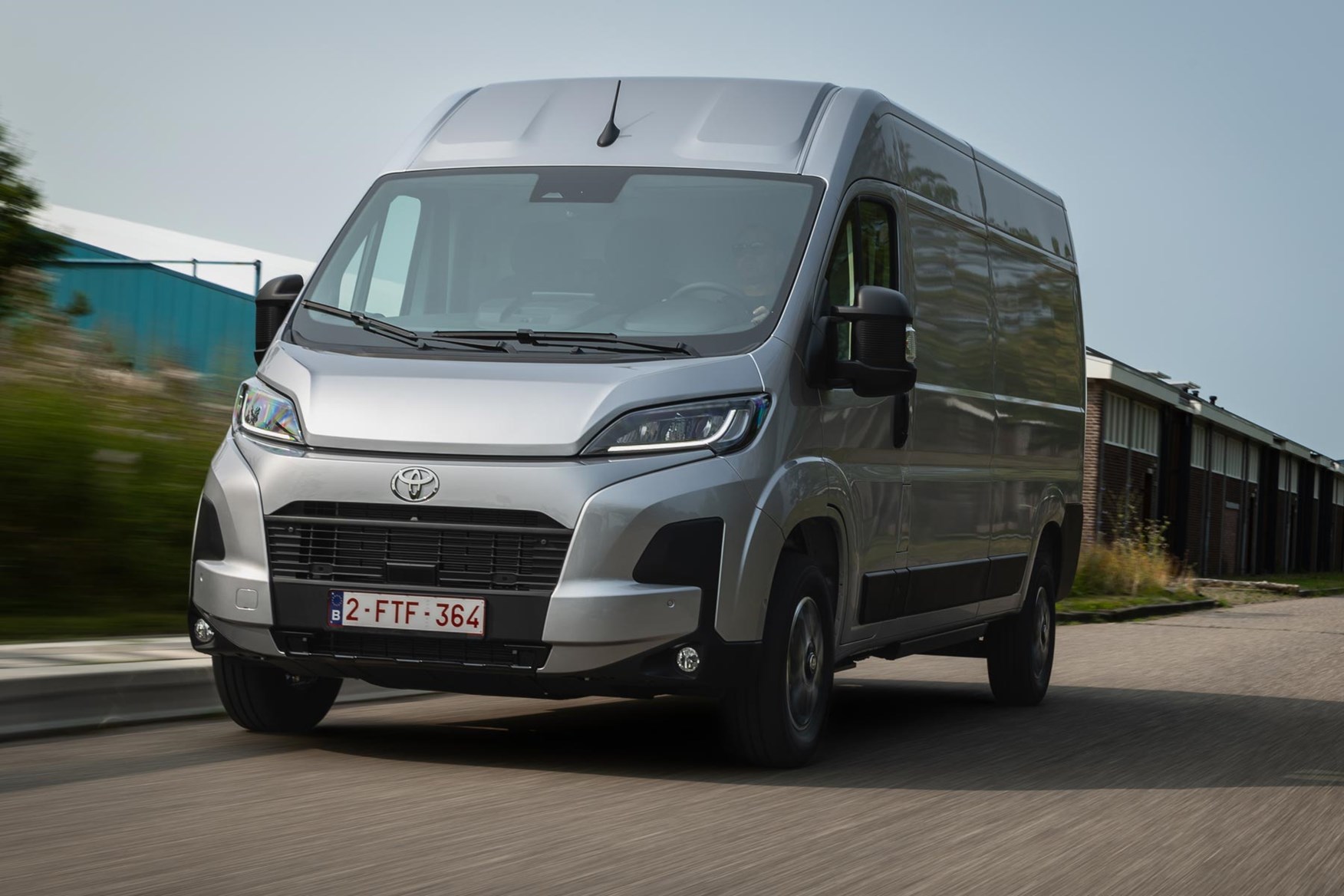
The only real variance comes from the level of equipment that each company chooses to offer, and Toyota has gone down the route of providing more kit than its rivals. This naturally puts a bit more onto the purchase price, but it also makes the process of choosing your van that bit easier.
Toyota Proace Max electric range
The 110kWh battery in the Toyota Proace Max is one of the largest in the large van class, but this doesn’t automatically translate to the longest electric range of its peers. It still gives you an official maximum of 261 miles, which is a big step forward compared to the large vans of recent years.
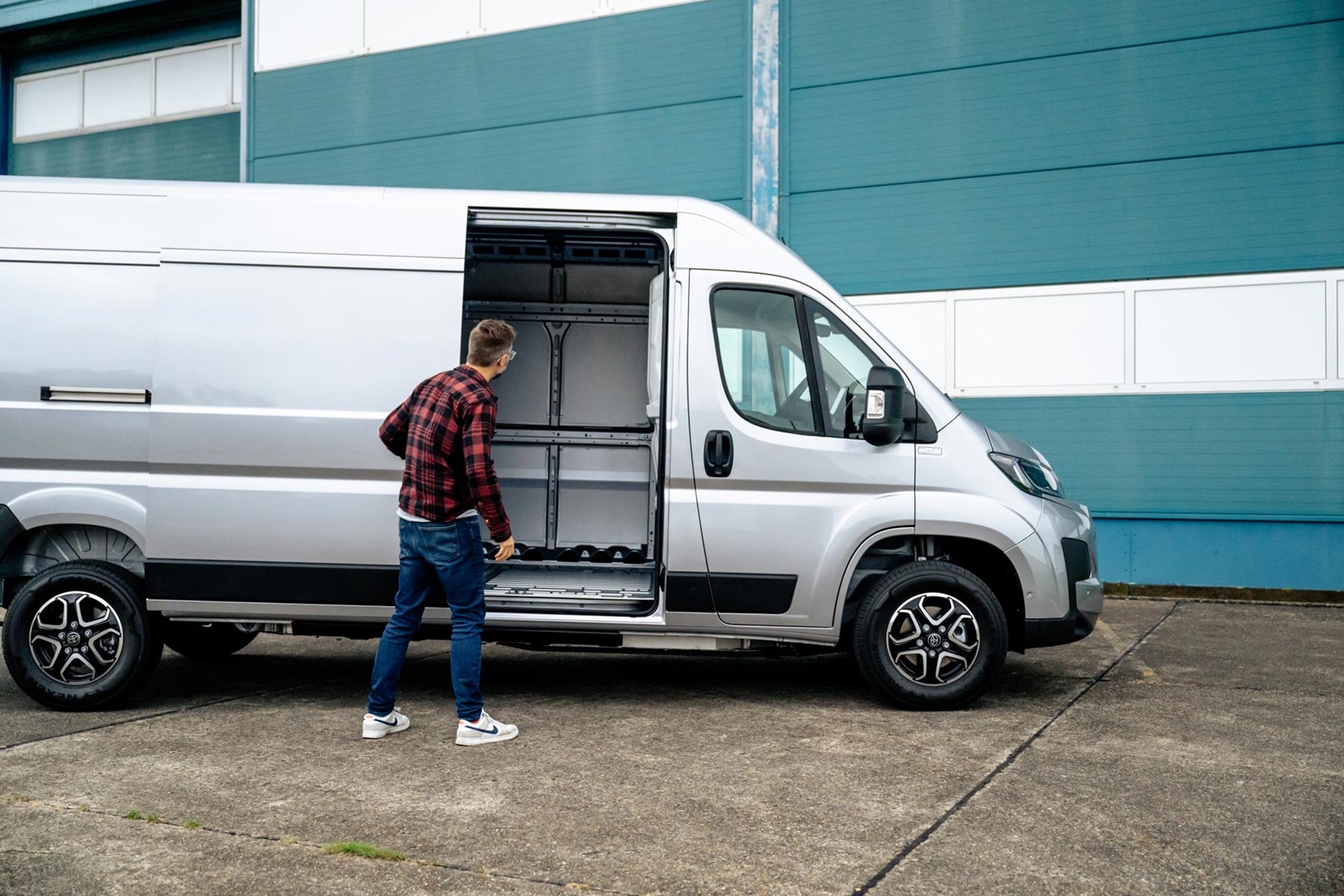
Others fare better, with more modern vehicles doing so with smaller batteries and better aerodynamics, but this is in the general ballpark of the class.
Toyota Proace Max warranty
The Proace Max’s warranty is its absolute trump card, and is the reason to choose it over its other Stellantis cousins. At 10 years, the warranty is one of the best in the whole automotive industry, let alone among the Stellantis group vans.
You get 10 years cover from new, but you do have to take it back to get serviced at a Toyota dealer each year to maintain that. However, if you buy a used Proace Max that hasn’t been serviced as it should then you can rejuvenate this warranty by taking it back to a Toyota dealer.
Toyota Proace Max standard equipment
The single trim on the Toyota Proace Max is called Icon, and this is typically the mid-level specification on the brand’s commercial vehicles. This means there is the possibility that there might be another version added above or below it in the future, but for now it means that you don’t have to suffer a basic level of equipment.
The equipment highlights are as follows:
- 10-inch touchscreen infotainment
- Rear-view camera
- Rear parking sensors
- Satellite navigation
- Bluetooth
- Air conditioning
- Auto LED headlights
- 12V power outlet in cargo bay
- 16-inch steel wheels
- Full-size spare wheel
The options list on the Proace Max is relatively short, with only metallic paint, floor mats and a dash camera the main features outside of racking.
The Stellantis large vans don’t usually trouble the top spots in reliability surveys, but there is an interesting point of note in our sister publication Fleet News’ annual FN50 analysis. The smaller Toyota Proace finished above its four medium-sized equivalents, despite being the same basic vehicle.
Although the details could differ from van to van, this could well be down to that superior warranty and the little extra that Toyota’s dealers bring.
- Good level of safety kit
- Extra security equipment on options list
At the time of writing, the Toyota Proace Max hasn’t been tested by Euro NCAP, but its Stellantis equivalents have been. They reached a Gold standard, which is one below the top Platinum level.
The standard kit list includes:
- Pre-collision system with pedestrian and cyclist detection
- Cruise control
- Intelligent speed assist
- Lane departure alert
- Lane trace assist
- Driver attention alert
- Road sign assist
- ABS with brake assist
- Hill-start assist
- Driver and front passenger airbags
- Tyre pressure warning system
- eCall
- Full bulkhead
The options list is fairly short for the Proace Max, but the few things that are on there are geared towards keeping the contents of your van secured. There is a choice of two different locks for the rear loading bay. There’s also the option to add in a Nextbase dashcam although there is nothing to stop you installing your own in the usual manner.
Which Toyota Proace Max Electric is best for me?
There’s only the one, so it is all down to a question of size and shape. The version that is set to be the most popular is the L3H2, so if you want to play it safe and get the one that is likely to be easier to find a buyer for when you come to sell it then that is the one to look at.












